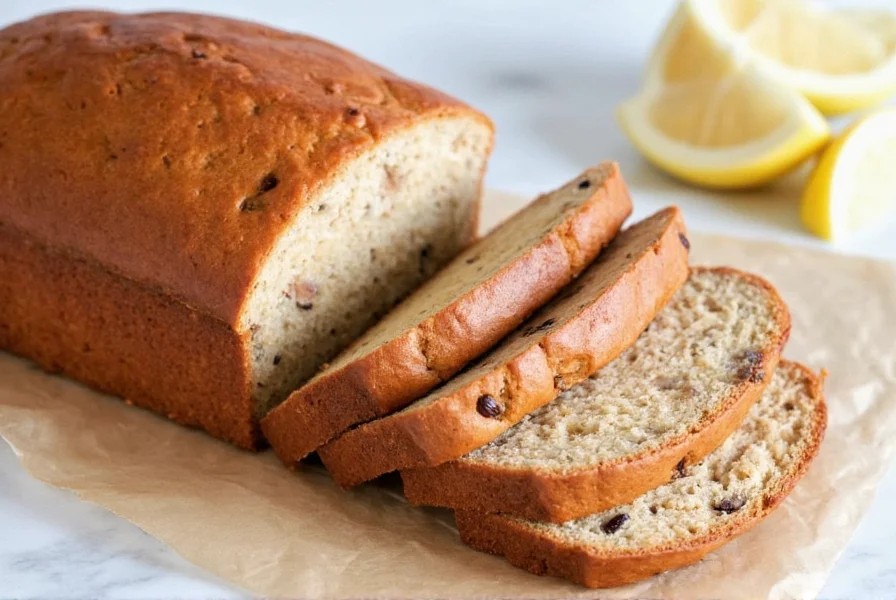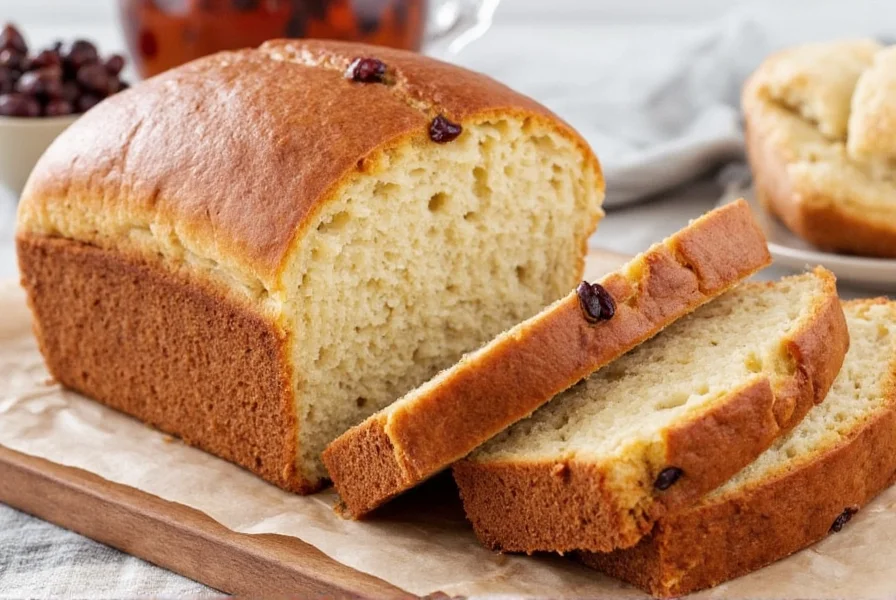The best cinnamon raisin bread recipe combines high-quality bread flour, active dry yeast, plump golden raisins soaked in warm water, and a perfect balance of cinnamon and sugar. This tested method yields a soft, moist loaf with even cinnamon distribution and plump raisins that don't sink to the bottom. Key to success is proper yeast activation, controlled rising times, and the critical step of soaking raisins before incorporation.
Creating exceptional cinnamon raisin bread at home requires understanding both the science of bread-making and the specific challenges of incorporating fruit into yeast dough. Unlike many simplified recipes that result in dry, unevenly spiced loaves with sunken raisins, this professional approach delivers consistent bakery-quality results. The magic happens through precise hydration control, proper yeast management, and strategic ingredient preparation that addresses the unique challenges of fruit breads.
Essential Ingredients and Their Roles
Understanding each component's function transforms your homemade cinnamon raisin bread from hit-or-miss to reliably perfect:
| Ingredient | Function | Professional Tip |
|---|---|---|
| Bread flour (12-13% protein) | Creates strong gluten structure to support fruit weight | Measure by weight (454g) for accuracy - spoon and level if using cups |
| Active dry yeast | Leavening agent for proper rise | Always test in warm water (105-110°F) with pinch of sugar before use |
| Golden raisins | Sweet fruit pockets without harsh tartness | Soak in warm water 15 minutes, then pat completely dry |
| Ceylon cinnamon | Complex, warm spice without bitterness | Use 2 tsp for balanced flavor - avoid Cassia for delicate breads |
Equipment Checklist for Success
While you can make cinnamon raisin bread without bread machine, these tools ensure consistent results:
- Digital kitchen scale (essential for accurate measurements)
- Stand mixer with dough hook (or sturdy bowl for hand-kneading)
- 9x5 inch loaf pan (light-colored metal preferred)
- Dough scraper (for clean handling)
- Instant-read thermometer (verifies proper internal temperature)
Step-by-Step Method with Expert Insights
Follow this tested cinnamon raisin bread recipe for flawless results every time:
1. Yeast Activation (Critical First Step)
Combine 1 cup warm water (105-110°F), 2¼ tsp active dry yeast, and 1 tbsp sugar. Wait 5-10 minutes until foamy. If no foam forms, discard and start over with fresh yeast. This simple test prevents failed loaves before you commit other ingredients.
2. Dough Development
Mix activated yeast with 2 cups warm water, ⅓ cup honey, ¼ cup melted butter, 1 large egg, and 1 tsp salt. Gradually incorporate 454g bread flour until shaggy dough forms. Knead 8-10 minutes until smooth and elastic. Proper gluten development prevents dense, gummy texture - the most common homemade cinnamon raisin bread mistake.
3. Raisin Preparation (Game-Changing Step)
Soak 1½ cups golden raisins in warm water for 15 minutes, then drain and pat completely dry with paper towels. Wet raisins create pockets of steam that collapse the structure. This simple step prevents the #1 issue in cinnamon raisin bread without sinking fruit.
4. Cinnamon Swirl Technique
After first rise, roll dough into 16x12 inch rectangle. Mix ½ cup sugar with 2 tsp Ceylon cinnamon and 2 tbsp flour (the flour prevents bleeding). Sprinkle evenly, leaving ½ inch border. Scatter prepared raisins over cinnamon mixture. Roll tightly from long side, pinch seam closed. This method creates even distribution rather than concentrated spice pockets.
5. Baking for Perfect Results
Place seam-side down in greased loaf pan. Proof until dough crowns 1 inch above pan rim (about 45 minutes). Bake at 350°F for 35-40 minutes until internal temperature reaches 190°F. Cool in pan 10 minutes, then transfer to wire rack. Resist cutting until completely cool (2 hours) - premature slicing causes gumminess.

Troubleshooting Common Problems
Even experienced bakers encounter issues with soft cinnamon raisin bread recipe attempts. Here's how to fix them:
- Dense texture: Usually caused by too much flour or under-proofing. Measure flour by weight, and proof until dough springs back slowly when gently pressed.
- Sunken raisins: Raisins weren't dried thoroughly after soaking. Always pat fruit completely dry before adding to dough.
- Bitter cinnamon: Using harsh Cassia cinnamon instead of delicate Ceylon. Substitute with 100% Ceylon for bakery-quality flavor.
- Collapsed loaf: Over-proofing or opening oven door during first 20 minutes of baking. Use oven light to check progress.
Delicious Variations to Try
Once you've mastered the basic cinnamon raisin bread recipe, experiment with these professional variations:
- Orange-infused: Add 2 tbsp orange zest to dough and substitute orange juice for ¼ cup water
- Nutty version: Fold in ½ cup toasted walnuts with the raisins
- Whole wheat option: Substitute 50% of bread flour with white whole wheat flour
- Gluten-free adaptation: Use 400g gluten-free bread flour blend plus 1 tsp xanthan gum
Serving and Storage Tips
Maximize enjoyment of your homemade cinnamon raisin bread with these professional techniques:
- For best texture, slice with serrated knife using gentle sawing motion
- Toast slices for enhanced flavor and texture contrast
- Store cooled loaf in airtight container at room temperature for 3 days
- Freeze whole loaves wrapped tightly in plastic for up to 3 months
- Revive stale slices by toasting or warming in 300°F oven for 5 minutes











 浙公网安备
33010002000092号
浙公网安备
33010002000092号 浙B2-20120091-4
浙B2-20120091-4